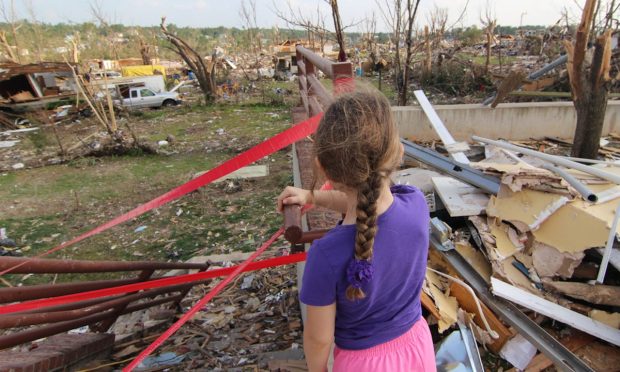Midwest Tornadoes Could Cost $5B in Insurance Payouts

Insurance companies could make payouts of up to $5 billion from last week’s deadly tornadoes in the Midwest.
As The Wall Street Journal reported Friday (Dec. 17), that number would make these storms — which struck six states and killed dozens of people — among the costliest tornadoes in history. The damage is so wide ranging that some insurance companies have begun using aerial imagery to determine where claims will originate.
“Some parts of town are still standing, but for the most part it is just total devastation,” Steve Jones, an agent for Shelter Mutual Insurance Co. in Mayfield, Kentucky, said.
While his office was standing, he has no electricity or internet access, meaning customers were directed to a “mobile catastrophe team” operating out of a nearby fast-food parking lot.
Unlike flood damage, which typically requires separate coverage, most auto and home-insurance policies cover tornado damage. But some insurers have begun adding special deductibles for damage from tornadoes and other wind events to lower potential payouts.
See also: The Quick And Quiet Evolution Of Insurance Toward Instant Payments
Homeowner policy deductibles are often $500 to $1,000, but these special deductibles can add up to 1% or 2% of the coverage amount, meaning a policy covering a $300,000 home would require homeowners to pay $6,000 before their insurance coverage kicked in.
While last week’s tornadoes could be record-setting in terms of payouts, the $5 billion figure is still less than the cost of two other major 2021 storms, Winter Storm Uri ($15 billion) and Hurricane Ida ($40 billion).
The most expensive tornado on record came in 2011, when twisters caused $8.5 billion in losses in Alabama.
Read more: FEMA On Disbursing Emergency Aid To Victims
Getting disaster relief payments to the victims of these disasters can be challenging, FEMA’s Alex Amparo told PYMNTS in 2018. Displaced residents may not able to pick up their mail, or use their bank accounts if they’re without electricity.
That’s why FEMA uses a range of methods to get people their financial aid: paper checks, electronic fund transfers (EFTs) and direct deposit to bank accounts or recipients’ debit cards.
Direct deposit and debit cards offer several advantages, Amparo said, as quickly getting funds into bank accounts or onto cards keeps applicants from having to wait.
